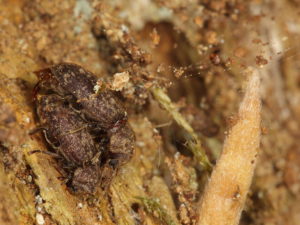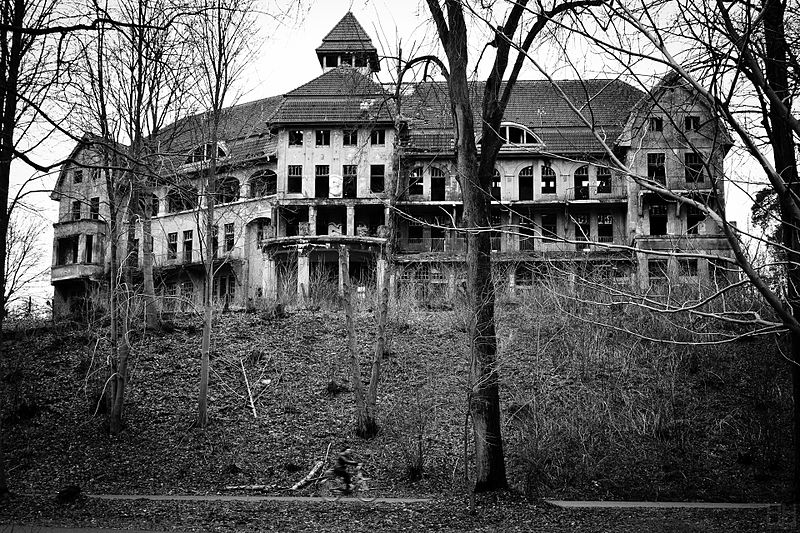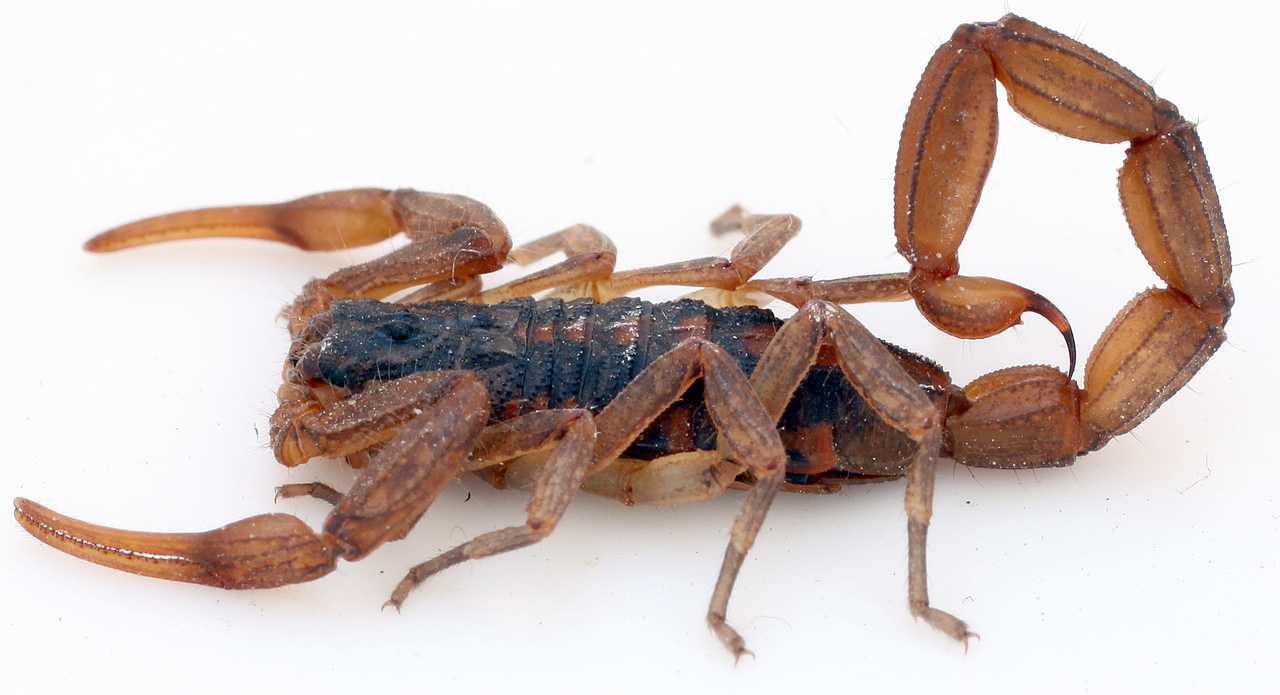If you hear a strange ticking noise at night, don’t be too alarmed! It’s not some ghost trying to haunt you…it’s likely the deathwatch beetle hanging out in your old wooden furniture!

The deathwatch beetle, Xestobium rufovillosum, is a grayish-brown borer- or wood-eating- insect of the family Anobiidae and insect order Coleoptera. It has a cylindrical body, a small head, and is not very big, ranging from one to nine millimeters in length (less than 1/2 an inch). The deathwatch beetle is found in the eastern portion of the United States, particularly in the wood of old buildings and in the dead wood of very old trees.
The female beetle places her eggs into crevices in old wood. When the eggs hatch, they make their way into the wood, feed on it, and grow. As they feast on the wood, the larvae leave their tiny, bun-shaped droppings (called frass) behind in the holes they make. The frass is a clear indicator of the activity of deathwatch beetles in the home. When the temperature is warm, larvae develop into adult insects in about a year, but can take up to ten years when the conditions are unfavorable. You will likely not notice these larvae living in the wood until they emerge from the holes as adult beetles.

According to legend, the tapping noise produced by these beetles is a sign of Death coming for someone living in the home. However, this is just that- a legend! The ticking sound is actually produced by males banging their heads against old wood, possibly to attract another mate. They make circular holes in the wood, which can very in size, and use these holes as emergency exists to come out of the wood.
The deathwatch beetle targets wood that has been damaged by fungus (which is why it loves to dwell in old houses!). This beetle will go for anything from large pieces of furniture to smaller softwood items and in some cases, books. So, next time you visit an antique shop or spend a night in an old house, watch out for this noisy little beetle!




